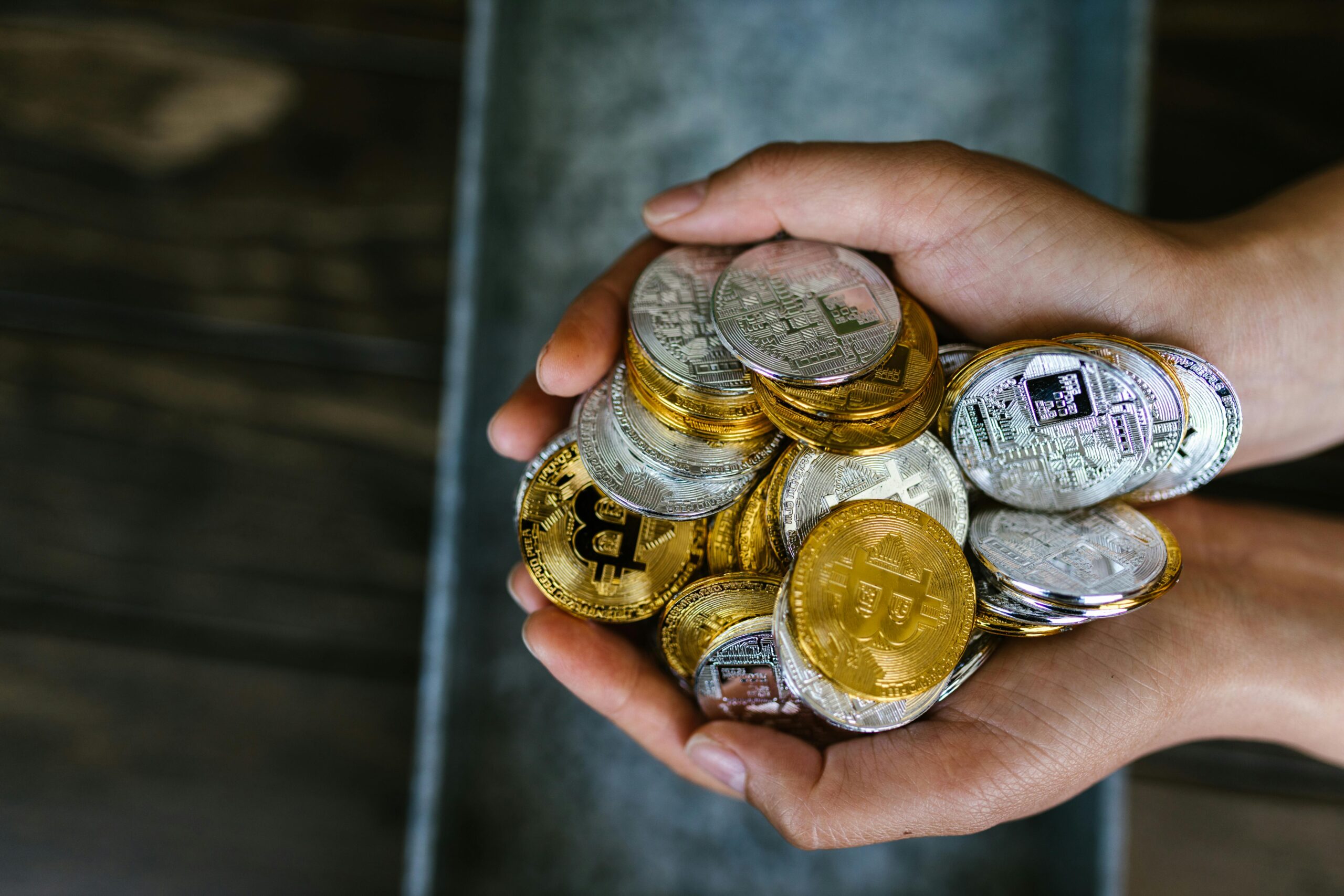Let’s learn and understand the basics to build a crypto portfolio in 2025 with essential tips for diversification, importance of diversification and how to maintain a balanced crypto portfolio
How to build your crypto portfolio 2025 – Tips for diversification
Introduction
Building a cryptocurrency portfolio is an exciting but crucial part of your investment journey. It is not limited to choosing what crypto coins would make up the portfolio but essentially we need to create a portfolio that targets “diversification” which is an important element in building any investment portfolio. Creating a successful crypto portfolio also involves careful planning and strategic decision-making, and most importantly—”diversification” as discussed earlier much like traditional investments like stock and bonds. In this guide, we’ll walk you through the essential steps on how to build a diversified crypto portfolio that minimizes risks while aiming for long-term growth.
Evaluate your risk tolerance
Investing in crypto market is risky as cryptocurrencies are highly volatile and subject to price fluctuations. It is therefore essential that you understand your risk tolerance level before investing in cryptocurrencies. Factors that influence risk tolerance in crypto include age, income levels, financial goals – long term/short term and urgency to meet them, ability to take risks, trading experience in crypto market and reaction to market news and sentiments.
Basis the parameters derived after evaluation of the above criteria, determine your risk tolerance level. Risk tolerance level can be
Low-risk: Focus on low-risk coins which are stable coins like Bitcoin and Ethereum
Moderate risk: Willing to accept moderate losses against moderate gains, here focus should be to invest in established altcoins with steady growth over time
Aggresive risk: Willing to take high-risk in exchange of high returns or high losses by investing in volatile assets like newly launched altcoins with less or no analysis of the past returns or in niche crypto projects.
Portfolio Diversification in Crypto
As understood in case of other investments like stocks, In the context of cryptocurrencies also, portfolio diversification refers to spreading your investments here it means across a variety of digital assets. Instead of putting all your funds into a single cryptocurrency, you distribute your investments among different coins, tokens, and sectors of the crypto market. This helps reduce overall risk, especially given how volatile the cryptocurrency market can be.
Why is Diversifying Your Crypto Portfolio Important?
Diversification is important to protect your investments. Now let’s understand why diversification in the crypto portfolio is important:
1. Risk Minimisation: Given that cryptocurrency market is highly unpredictable, diversifying your portfolio lowers the chances of a sudden market downturn negatively impacting your entire investment.
2. Increased Growth Opportunities: By investing in a variety of digital assets, you can benefit from different market trends, technological breakthroughs, and sectors (like NFTs, DeFi, and Layer-2 scaling solutions).
3. Steady Long-Term Growth: A diversified portfolio has a higher potential for steady returns over time, offering more stability in the face of market volatility in the long term.
How to Build a Diversified Crypto Portfolio: 5 Key Tips
When building your crypto portfolio, it’s important to remember that it’s not just about purchasing random cryptocurrencies. A well-thought-out strategy is essential for balancing risk and reward.
- Always begin with Stable Cryptocurrencies like Bitcoin and Ethereum
If you’re new to crypto, it’s wise to start with the two leading cryptocurrencies: “Bitcoin (BTC)” and “Ethereum (ETH)”. These digital currencies are trusted, have established ecosystems, and are less volatile than smaller altcoins.
– “Bitcoin (BTC)”: Bitcoin is considered the “gold standard” in crypto. As the first cryptocurrency, it boasts a large market capitalization and strong institutional support. Its value is relatively stable compared to smaller altcoins.
– Ethereum (ETH): Ethereum is the foundation for a wide range of decentralized applications (dApps) and smart contracts.
Having a solid base of Bitcoin and Ethereum in your portfolio provides a cushion against market fluctuations while offering long-term growth potential.
2. Add Altcoins for Greater Exposure
While Bitcoin and Ethereum should form the core of your portfolio, adding “altcoins” (cryptos that aren’t Bitcoin) can provide greater exposure to emerging opportunities.
Some popular altcoins to consider include:
– “Binance Coin (BNB)”: Binance Coin powers the Binance ecosystem and can be used to pay for transaction fees on the Binance Exchange.
– “Solana (SOL)”: Solana is a high-performance blockchain that offers fast and low-cost transactions. It’s gaining popularity for decentralized applications and NFTs.
– “Cardano (ADA)”: Cardano is a blockchain that focuses on sustainability and scalability. It is a smart contract platform that is seen as an alternative to Ethereum.
Altcoins offer higher growth potential but are also riskier. It’s essential to do thorough research before adding them to your portfolio.
3. Incorporate Stablecoins for Stability
Stablecoins, such as “Tether (USDT)” or “USD Coin (USDC)”, are a key component in stabilizing your crypto portfolio. These coins are pegged to a fiat currency like the US Dollar, so they maintain a stable value without the drastic fluctuations seen in other cryptocurrencies.
While stablecoins don’t offer the explosive growth potential of other cryptocurrencies, they can be used to:
– Protect your portfolio during times of market uncertainty.
– Provide liquidity for buying new assets.
– Earn passive income through staking or yield farming.
Stablecoins help reduce the overall risk of your portfolio while providing a buffer against volatility.
4. Explore the DeFi and NFT Sectors
For those willing to take on more risk, the “DeFi (Decentralized Finance)” and “NFT (Non-Fungible Tokens)” markets are worth exploring. Both sectors have gained massive attention and can offer substantial returns.
– “DeFi Tokens”: DeFi tokens like “Aave (AAVE)”, “Uniswap (UNI)”, and “SushiSwap (SUSHI)” are the backbone of decentralized financial platforms. These platforms aim to replicate traditional financial services without intermediaries, offering the potential for high returns.
– “NFTs”: Non-fungible tokens represent unique digital assets, ranging from artwork to collectibles. Platforms like “OpenSea” have seen significant growth in NFT trading. NFTs have the potential to generate large returns, but they are also highly speculative.
It’s crucial to only allocate a small percentage of your portfolio to these sectors because of their high-risk nature.
5. Regularly Rebalance and Monitor Your Portfolio
After setting up your diversified crypto portfolio, it’s important to “rebalance” periodically. Cryptocurrency prices can change rapidly, so regularly reviewing your portfolio ensures it remains aligned with your financial goals.
Things to do during rebalancing:
– Assess your assets’ performance: Keep track of how each cryptocurrency is performing and adjust accordingly.
– Reallocate funds: If certain assets have appreciated significantly, you may want to take profits or redistribute funds into underperforming assets.
– Monitor market conditions: Stay updated on the latest trends, regulatory changes, and market events that could impact your portfolio.
Additional Tips for a Balanced Crypto Portfolio
Understand Your Risk Tolerance: Determine how much risk you’re willing to take. If you’re risk-averse, consider focusing on Bitcoin, Ethereum, and stablecoins. For higher risk and potentially higher rewards, explore altcoins, DeFi tokens, and NFTs.
Research Thoroughly: Don’t invest based solely on hearsay or hype. Always conduct your own research into the technology, use case, and team behind any cryptocurrency.
Think Long-Term: Cryptocurrency can be volatile in the short term. Try to keep a long-term perspective, focusing on solid, reliable assets.
Keep Your Assets Secure: Use hardware wallets like “Ledger” or “Trezor” for added security, especially for long-term holdings. Avoid storing large amounts of cryptocurrency on exchanges, as they can be prone to hacking.
Conclusion
Diversifying your cryptocurrency portfolio is crucial for reducing risk and improving your chances of consistent growth. By including a mix of established coins like Bitcoin and Ethereum, altcoins, stable coins, and exploring emerging sectors like DeFi and NFTs, you can create a well-rounded and resilient portfolio. Remember to monitor your investments regularly, stay informed, and adjust as necessary to maximize your potential in the dynamic world of cryptocurrencies.

